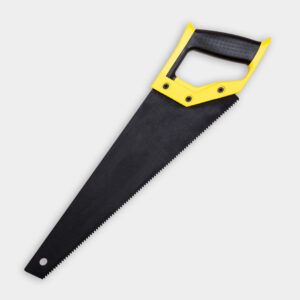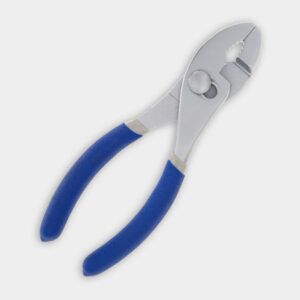Project details
Skill
Cost
Estimated Time
We may be compensated if you purchase through links on our website. Our team is committed to delivering honest, objective, and independent reviews on home products and services.
Heating a swimming pool can be expensive, but there’s actually an easy solution that leverages your existing air conditioning system at no additional cost. This method not only heats your pool efficiently but also improves your air conditioner’s performance. In this article, we’ll explore how to heat a swimming pool using an air conditioner — a process demonstrated in the video above by This Old House plumbing and heating expert Richard Trethewey.
Can You Heat a Swimming Pool with an Air Conditioner?
Heating a pool with an air conditioner might sound counterintuitive, but it’s a clever way to repurpose waste heat. This method utilizes the heat produced by your air conditioning system, which would otherwise be expelled into the atmosphere, to warm your pool water.
How It Works
The process involves redirecting the hot refrigerant from your air conditioner through a heat exchanger. The heat exchanger transfers the heat from the refrigerant to the pool water, effectively warming it. Meanwhile, the cooled refrigerant returns to the air conditioner, making it run more efficiently.
Benefits of This Method
Using an air conditioner to heat your pool offers the following advantages:
- Energy efficiency: Utilizes heat that would otherwise be wasted
- Cost savings: Reduces the need for a separate pool heater
- Improved air conditioner performance: Cooling the refrigerant before it returns to the unit enhances its efficiency
Required Air Conditioning Components to Heat Your Pool
To heat your pool with an air conditioner, you’ll need several key components. These parts work together to transfer heat from the air conditioning system to your pool water.
Heat Exchanger
The heat exchanger is the core component of this system. It’s designed to transfer heat from one medium to another without mixing them. In this case, it transfers heat from the air conditioner’s refrigerant to the pool water.
Diverting Valve
A three-way diverting valve is important for controlling the flow of refrigerant. It allows the system to switch between normal air conditioning operation and pool heating mode.
Master Controller
The master controller acts as the brain of the system. It interfaces between the pool controller, heat exchanger, and air conditioner, so they work in harmony.
AC Pool Heating System Installation Process
Installing a pool heating system that utilizes your air conditioner requires careful planning and execution. While some steps can be done by a skilled DIYer, others require professional expertise.
Preparing the Pool Filter System
Before integrating the heat exchanger with the filter system, these steps need to be followed:
- Turn off the power to the pool filter.
- Use a PVC saw to cut out a section of plastic pipe leading from the pool filter.
- Install a T-fitting with a threaded adapter and sensor well.
- Dry-fit PVC pipes and fittings to connect the pool filter to the heat exchanger and back to the pool.
- Glue the PVC components together using primer and cement once satisfied with the fit.
Installing the Heat Exchanger
For the heat exchanger, specific considerations make all the difference. Follow these steps:
- Position the heat exchanger near the pool filter and air conditioner.
- Connect the PVC pipes from the pool filter to the heat exchanger’s water inlet.
- Connect another PVC pipe from the heat exchanger’s water outlet back to the pool return line.
- Use threaded unions to connect the pipe ends to the heat exchanger, allowing easier maintenance.
Connecting Refrigerant Lines
Given the complexity of this step, professional help is indispensable. A pro will connect the air conditioner’s refrigerant lines to the heat exchanger and pressure-test the connections to ensure there are no leaks. They’ll also recharge the refrigerant lines.
Installing the Master Controller
A technician should mount the master controller on the exterior wall of the house and connect it to the pool pump, heat exchanger, and air conditioner. They’ll also make sure all electrical connections are properly insulated and weatherproofed.
Air Conditioning Pool Heating System Operation
Once installed, the system operates seamlessly to heat your pool while cooling your home. Here’s how it works:
- Temperature monitoring: When the air conditioner is running, the system checks the pool temperature.
- Heating decision: If the pool needs heating, the diverting valve redirects hot refrigerant to the heat exchanger.
- Heat transfer: The heat exchanger transfers heat from the refrigerant to the pool water.
- Refrigerant cooling: Cooled refrigerant returns to the air conditioner, improving its efficiency.
- Normal mode: If the pool doesn’t need heating, the system operates in normal air conditioning mode.
Pool Heating System Maintenance and Care
To keep your pool heating system running efficiently, regular maintenance is essential. Here are some key maintenance tasks:
- Regularly clean the pool filter to ensure proper water flow
- Check and clean the heat exchanger annually
- Inspect refrigerant lines for leaks or damage
- Test the diverting valve to make sure it’s functioning correctly
- Have a professional technician service the system annually
Considerations and Limitations of Using an Air Conditioning System to Heat Your Pool
While heating your pool with an air conditioner is an innovative solution, it’s not suitable for every situation. Consider these factors:
- Climate: This system works best in warm climates where air conditioning is used frequently.
- Pool size: Larger pools may require more heating capacity than a single air conditioner can provide.
- Air conditioner capacity: Ensure your air conditioner has sufficient capacity to heat your pool effectively.
- Installation costs: While operating costs are low, initial installation can be expensive.
Beyond the Basics
Check that your pool system is compatible with your HVAC system. You also need to make sure you’re adhering to local building and safety codes before you tackle this project. While heating your swimming pool with an air conditioner is efficient overall, monitor energy consumption closely in the initial stages to assess actual cost benefits.
Our Conclusion
Heating a swimming pool with an air conditioner is an innovative way to have a warm swimming pool year-round. It repurposes waste heat, improves air conditioner efficiency, and can significantly reduce pool heating costs. However, professional installation is crucial to ensure safety and optimal performance.


